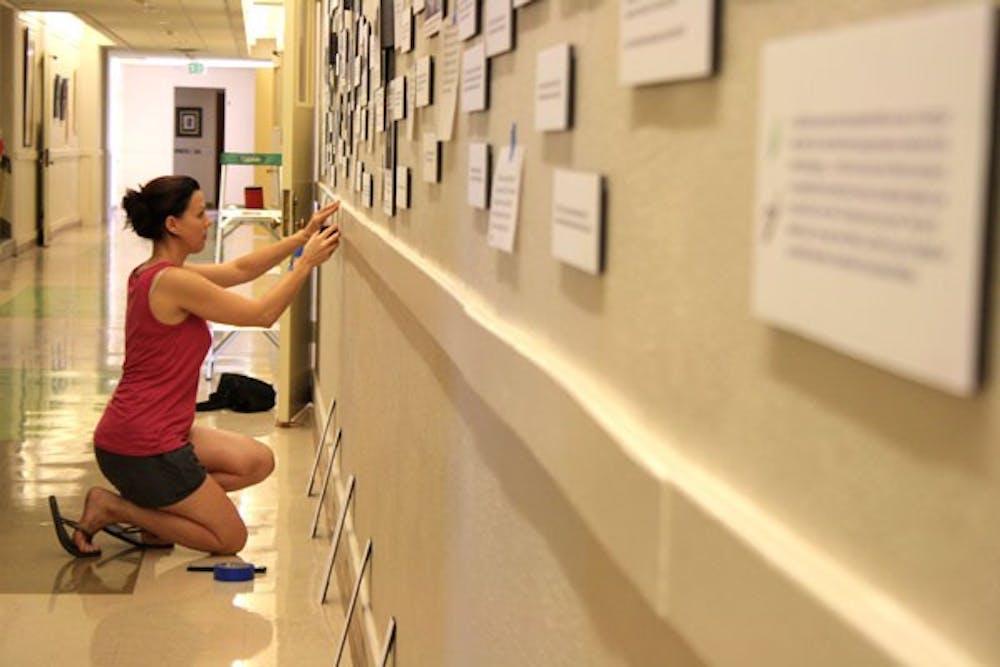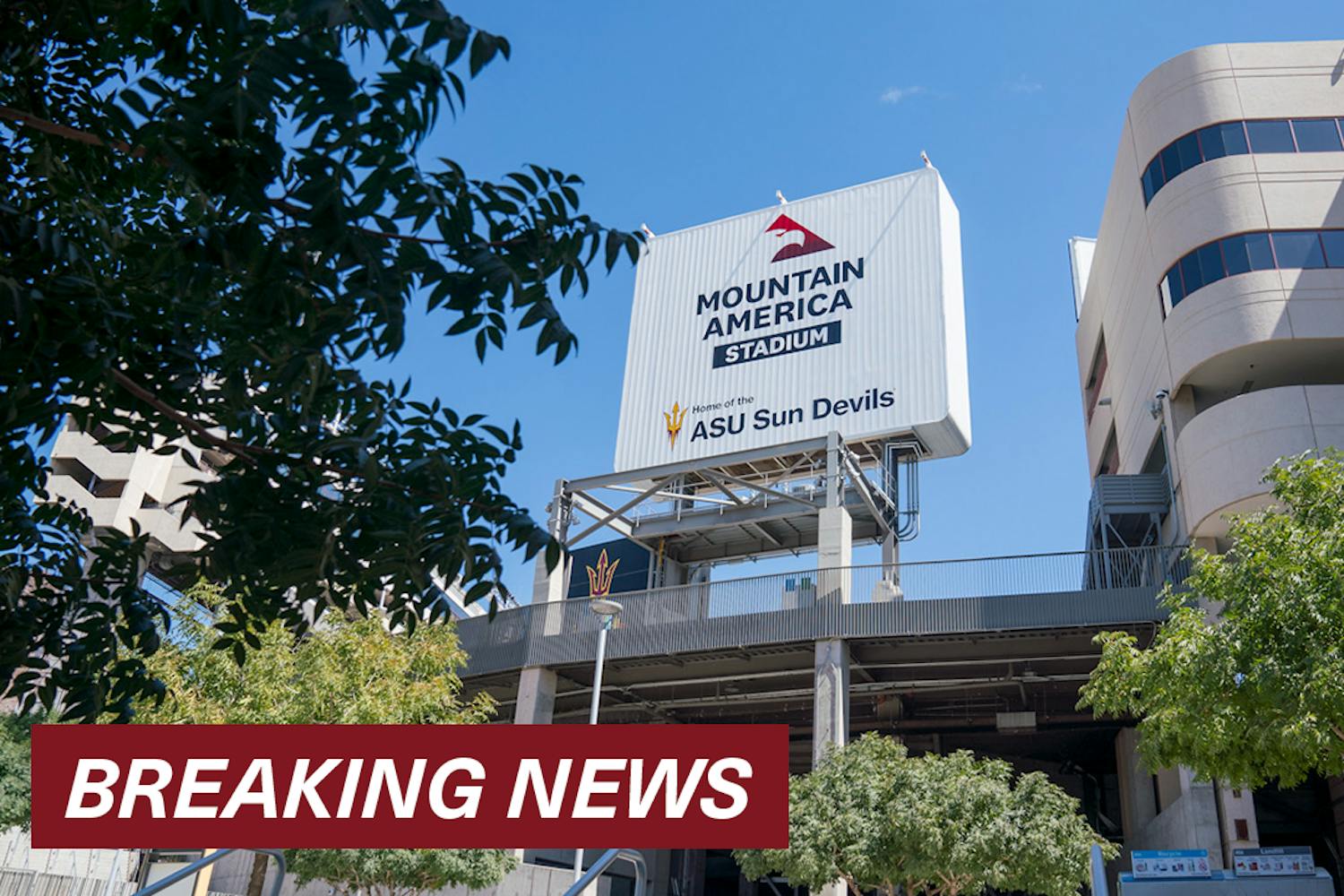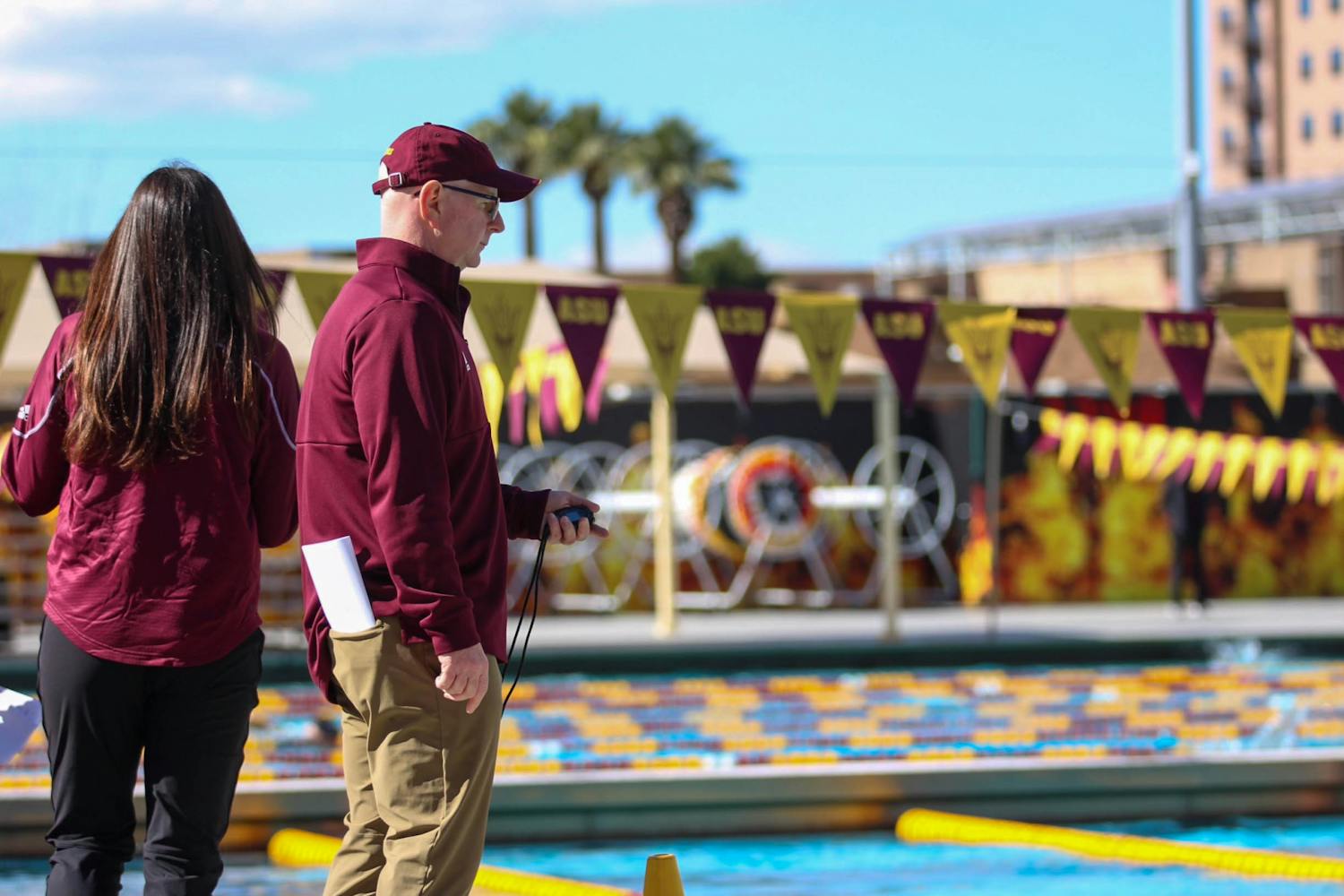 Graduate student Victoria Sargent prepares the Environmental Memories of South Central Phoenix exhibit at the George Washington Carver Museum and Cultural Center for its grand unveiling Wednesday evening. (Photo by Jessie Wardarski)
Graduate student Victoria Sargent prepares the Environmental Memories of South Central Phoenix exhibit at the George Washington Carver Museum and Cultural Center for its grand unveiling Wednesday evening. (Photo by Jessie Wardarski)An exhibit commemorating historic Phoenix opens Thursday evening at the George Washington Carver Museum and Cultural Center.
The exhibit, Environmental Memories of South Central Phoenix, depicts the transformation of historical neighborhoods in the area.
It will illustrate some of the disproportionate share of the city’s environmental hazards, like pollution, that have plagued the area for more than a century.
The exhibit primarily uses photographs to add historical context.
Interdisciplinary studies graduate student and exhibit designer Victoria Sargent said in addition to the photos, the exhibit will use graphs and maps that show environmental and industrial changes to the neighborhood over time.
“(Visitors) can actually see that history is not so far away (and) that it’s actually in their backyard,” Sargent said.
The photographs will range from family photos to scientific photos, from black and white to colored illustrations.
School of Human Evolution and Social Change graduation student Katelyn Parady said she came up with the idea and began research for the exhibit over a year ago.
Parady interviewed individuals who had lived in the Phoenix neighborhoods for more than 30 years.
“(These neighborhoods) were sort of the heart of old Phoenix,” Parady said. “They were really vibrant. There was … a really strong sense of community.”
Many neighborhoods and farmland that existed in abundance were destroyed by Phoenix’s industrialization and urbanization.
The exhibit portrays all of these changes and environmental hazards within the past century because of these modifications.
More than a year’s worth of research and expert input from ASU’s School of Human Evolution and Social Change was used for the historical and scientific context of the display. The exhibit emphasizes some of the community’s issues, such as loss of vegetation, lack of water, and extreme heat.
It also unveils what researchers predict will happen with these issues by 2040.
Parady said researchers foresee more intense summers in the Phoenix area in the next 30 years.
Museum Executive Director Princess Crump said the 85-year-old museum is a hidden jewel in an industrial area of the city.
“It’s our responsibility to know one another’s history,” Crump said. “We just ask people to come on down and see the stories and come share their stories also.”
The museum will have new hours of operation starting Thursday from 10 a.m. to 5 p.m. Monday through Friday.
Following the new hours, the museum will have an opening reception for the exhibit beginning at 5:30 p.m.
The general public is invited to the reception, but can also visit during the museum’s normal business hours.
The display will run through Dec. 7 and is free of charge, though donations are welcome.
Reach the reporter at jcsolis@asu.edu




